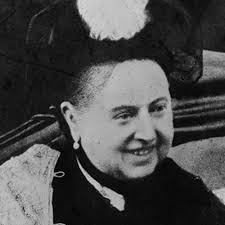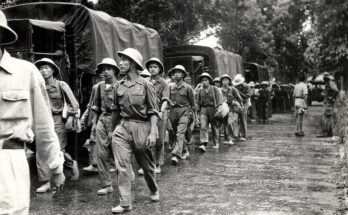Introduction
Queen Victoria and Prince Albert’s marriage, the image of a stern monarch in widow’s black often comes to mind. But behind her formidable public persona was a love story that defied royal norms of the time. Her marriage to Prince Albert wasn’t just a romantic union; it was a groundbreaking partnership that shaped British history and redefined the role of marriage in the monarchy. Curious about how this royal duo broke conventions? Let’s dive into their fascinating journey.
The Early Lives of Victoria and Albert
Victoria: The Heir in Waiting

Born in 1819, Alexandrina Victoria was thrust into the limelight as a potential heir to the British throne. Despite her royal lineage, her childhood was far from glamorous. Raised under the “Kensington System,” a strict set of rules designed by her mother and advisor Sir John Conroy, Victoria’s freedom was severely restricted. This isolation shaped her independent spirit, a trait that would later play a crucial role in her relationship with Albert.
Albert: A Prince with Vision

Prince Albert of Saxe-Coburg and Gotha, born the same year as Victoria, grew up in a more liberal environment. With a keen interest in the arts, sciences, and social reform, Albert’s upbringing prepared him for a life of purpose. Though he wasn’t born into the British royal family, his intellect and progressive ideas would later make him an indispensable partner to Victoria.
The Arranged Yet Romantic Courtship
A Royal Matchmaker
Victoria and Albert’s union wasn’t entirely a love-at-first-sight affair. Their match was orchestrated by Victoria’s ambitious uncle, Leopold I of Belgium, who saw the potential for strengthening ties between Britain and Germany. When Albert visited England in 1839, sparks flew, and Victoria proposed to him just five days later. Yes, you read that right – the queen proposed to Albert, an unconventional move even by today’s standards!
A Love Beyond Duty
While their marriage began as a politically advantageous match, it quickly blossomed into a deep and genuine partnership. Their letters reveal a mutual admiration and affection that transcended the formalities of royal life.
Breaking Royal Norms in Marriage
Victoria: A Reigning Monarch and a Wife
Unlike most royal marriages, Victoria and Albert’s relationship was based on equality and mutual respect. Victoria’s role as queen meant she held the ultimate authority, but she valued Albert’s counsel and included him in important decisions.
Albert: The “Prince Consort”
Albert’s official title was a point of contention. As a foreign prince, he had no automatic claim to power in Britain. Yet, over time, he carved out a unique role as Victoria’s confidant, advisor, and partner in governance. His efforts to modernize Britain and promote education earned him widespread respect.
Check: How to Optimize Your Website and Make It Load Faster | Website Optimization
A Partnership That Shaped History
Modernizing the Monarchy
Albert’s influence extended far beyond his domestic role. Together, Victoria and Albert transformed the monarchy from a symbol of privilege to one of service and moral leadership. They championed social reforms, supported the arts, and emphasized the importance of family values.
The Great Exhibition of 1851
One of Albert’s crowning achievements was organizing the Great Exhibition, a celebration of industrial progress held at the Crystal Palace in London. This event not only showcased Britain’s global leadership but also reflected the couple’s shared vision for a modern, forward-thinking monarchy.
Challenges in Their Marriage
Balancing Power and Love
Victoria’s fiery temperament often clashed with Albert’s more reserved nature. However, their disagreements usually ended with mutual understanding and compromise. Their ability to balance personal emotions with public responsibilities was a testament to their strong bond.
Navigating Public Scrutiny
Albert faced significant criticism as a foreign-born royal, with many questioning his motives and influence. Despite this, Victoria staunchly defended him, further solidifying their united front.
The Family They Built
Parents to Nine Children
Victoria and Albert’s marriage produced nine children, who were raised with an emphasis on discipline, education, and moral values. Their descendants went on to marry into royal families across Europe, earning Victoria the nickname “Grandmother of Europe.”
Advocates for Family Life
Unlike the detached parenting style common among royals, Victoria and Albert were deeply involved in their children’s upbringing. This hands-on approach was yet another way they broke with tradition.
The Tragic End of a Love Story
Albert’s Untimely Death
In 1861, Albert’s life was cut short by typhoid fever at the age of 42. His death devastated Victoria, who mourned him for the rest of her life. She withdrew from public duties for years, earning the nickname “Widow of Windsor.”
A Legacy of Love and Influence
Though Albert’s life was brief, his impact was enduring. Victoria’s continued reverence for him ensured that his contributions were remembered and celebrated.
Lessons from Their Partnership
Equality in Relationships
Victoria and Albert’s marriage demonstrated the power of mutual respect and shared goals. Their ability to support each other’s strengths set a new standard for royal partnerships.
The Role of Love in Leadership
Their deep affection for one another humanized the monarchy, making it more relatable to their subjects. This shift in perception helped strengthen the monarchy’s place in British society.
Conclusion
The marriage of Queen Victoria and Prince Albert wasn’t just a royal union; it was a groundbreaking partnership that redefined love, leadership, and legacy. Their story continues to inspire, reminding us that even in the most formal of settings, love can be the driving force for change. So, next time you think of Queen Victoria, remember the love and vision she shared with her Prince Albert – a partnership that truly stood the test of time.
Also Read: The Rise of the Flapper Culture: How Women’s Liberation Shaped 1920s America
FAQs
1. What made Victoria and Albert’s marriage unconventional?
Their marriage was unconventional because it was based on mutual respect and collaboration, rather than just duty or political alliances. Victoria proposed to Albert, and they worked as equals, with Albert playing a significant advisory role.
2. How did Prince Albert influence British society?
Albert modernized the monarchy, championed social reforms, and organized the Great Exhibition of 1851. His progressive ideas helped shape Victorian Britain.
3. Why was Albert criticized as a foreign prince?
Many Britons were skeptical of Albert’s motives and influence because he was German-born. Over time, his contributions earned him widespread respect.
4. How did Victoria cope with Albert’s death?
Victoria mourned Albert deeply and withdrew from public life for several years. She wore black for the rest of her life and kept his memory alive through tributes and public works.
5. What legacy did their marriage leave behind?
Victoria and Albert’s marriage set a precedent for equality and partnership in royal unions. Their emphasis on family values and public service reshaped the British monarchy.


